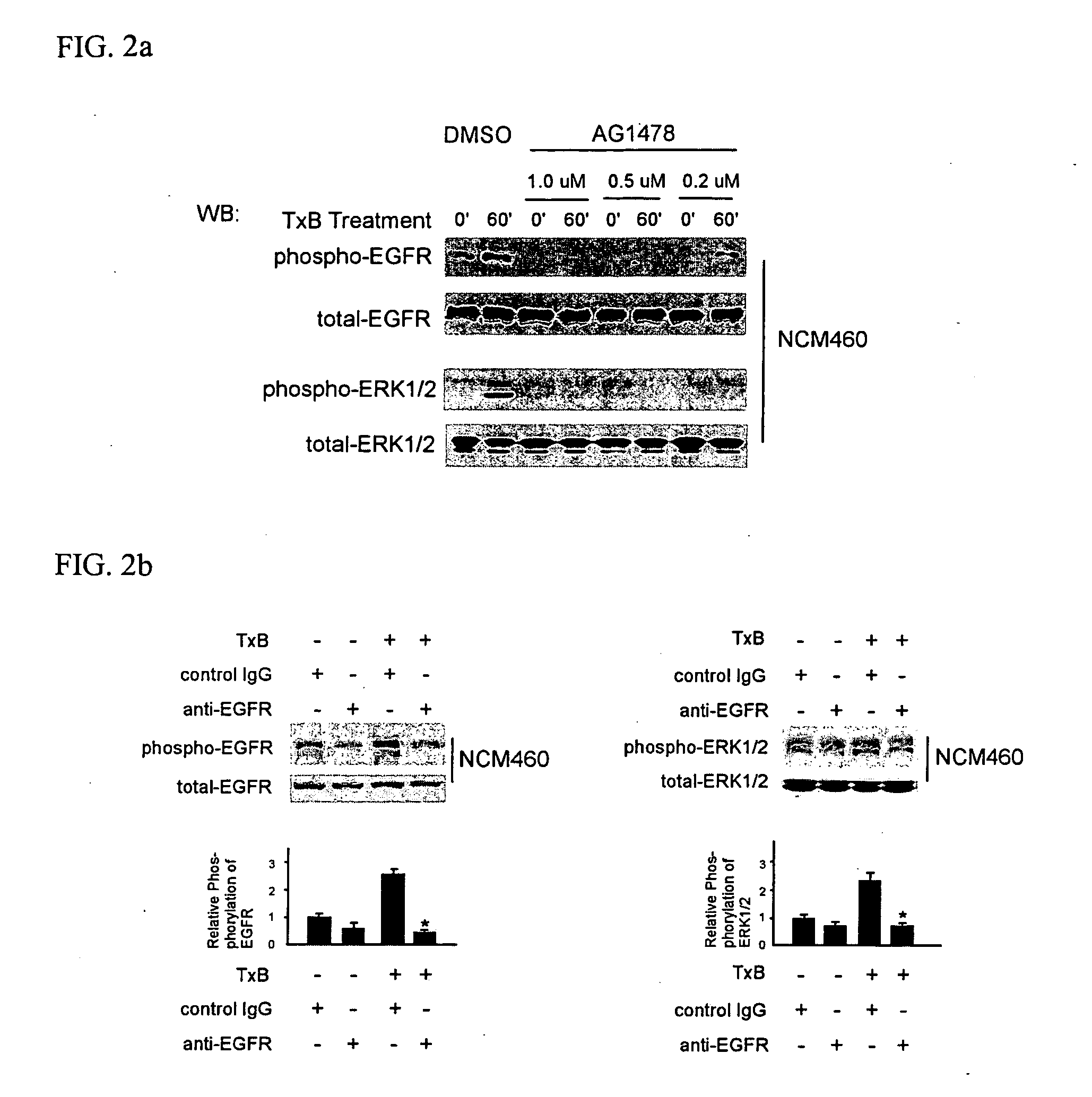Methods of treating inflammatory bowel disease
a technology of inflammatory bowel disease and inflammatory bowel disease, which is applied in the direction of antibody medical ingredients, peptide/protein ingredients, peptide sources, etc., can solve the problems of largely unknown signaling pathways mediated by these responses, and achieve the effect of increasing il-8 gene expression and egfr phosphorylation
- Summary
- Abstract
- Description
- Claims
- Application Information
AI Technical Summary
Benefits of technology
Problems solved by technology
Method used
Image
Examples
examples
Material And Methods
Toxin A (TxA) And Toxin B (TxB) Preparation And Cell Culture
[0039] TxA and TxB were purified from C. difficile strain 10463 (ATCC, Manassas, Va.) as described previously (Chen, M. L. et al., J. Biol. Chem., 277:4247-4254 (2002); He, D. et al., Gastroenterology, 119:139-50 (2000); Warny, M. et al., J. Clin. Invest., 105:1147-56 (2000)). Purified toxins A or B were suspended in Tris-HCL (PH=7.5) and piperazine-HCL (PH=5.5), respectively, at a concentration of 10 μM. Nontransformed human colonic epithelial cells NCM460 were maintained in M3D medium (INCELL Corporation, San Antonio, Tex.). HT29 cells derived from human colorectal adenocarcinoma were maintained in McCoy's 5A medium (Invitrogen, Carlsdad, Calif.). Cells were cultured in a 37° C. humidified incubator with 5% CO2.
Antibodies And Reagents
[0040] Total and phosphorylated EGFR antibodies were from Santa Cruz Biotechnology (Santa Cruz, Calif.). Antibodies against ERK1 / 2 and phospho-specific p44 / p42 MAP ...
PUM
 Login to View More
Login to View More Abstract
Description
Claims
Application Information
 Login to View More
Login to View More - R&D
- Intellectual Property
- Life Sciences
- Materials
- Tech Scout
- Unparalleled Data Quality
- Higher Quality Content
- 60% Fewer Hallucinations
Browse by: Latest US Patents, China's latest patents, Technical Efficacy Thesaurus, Application Domain, Technology Topic, Popular Technical Reports.
© 2025 PatSnap. All rights reserved.Legal|Privacy policy|Modern Slavery Act Transparency Statement|Sitemap|About US| Contact US: help@patsnap.com



